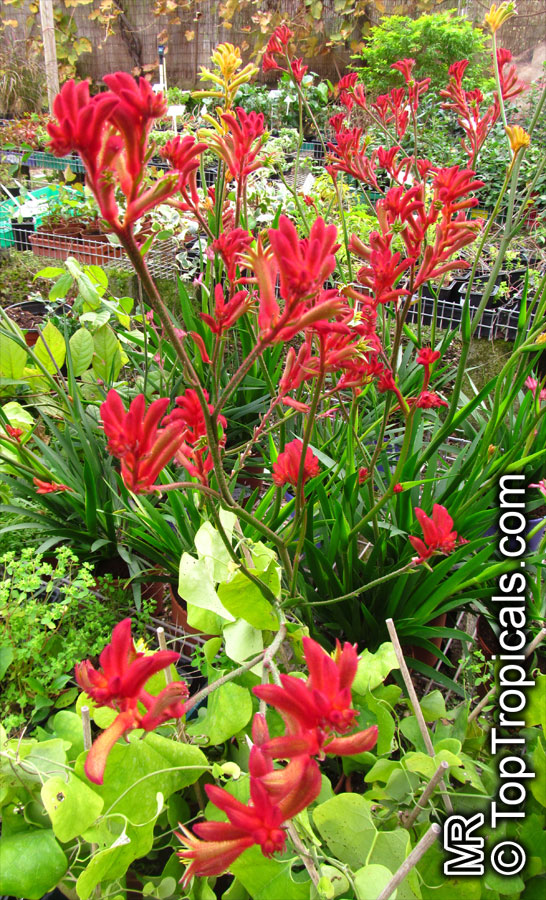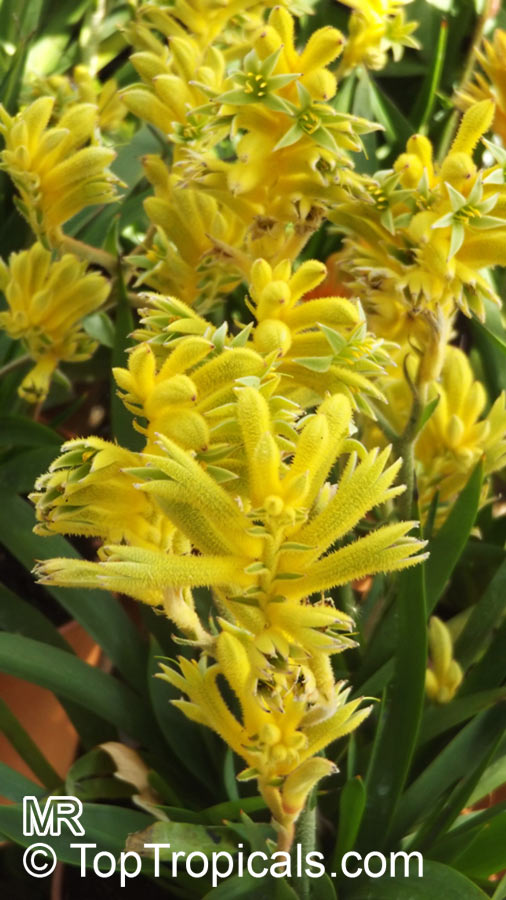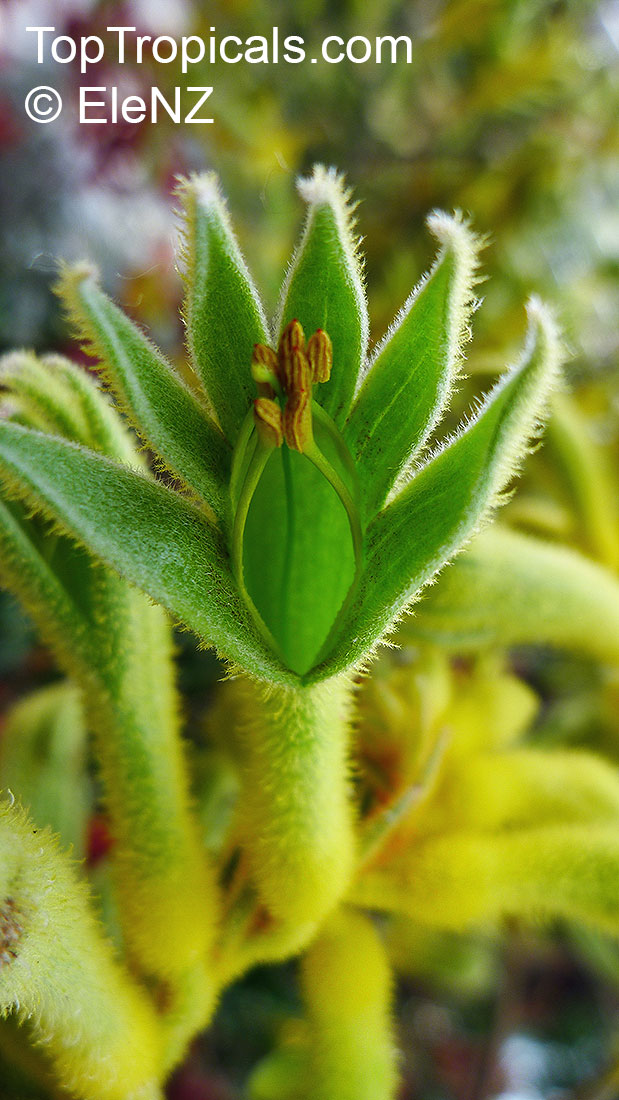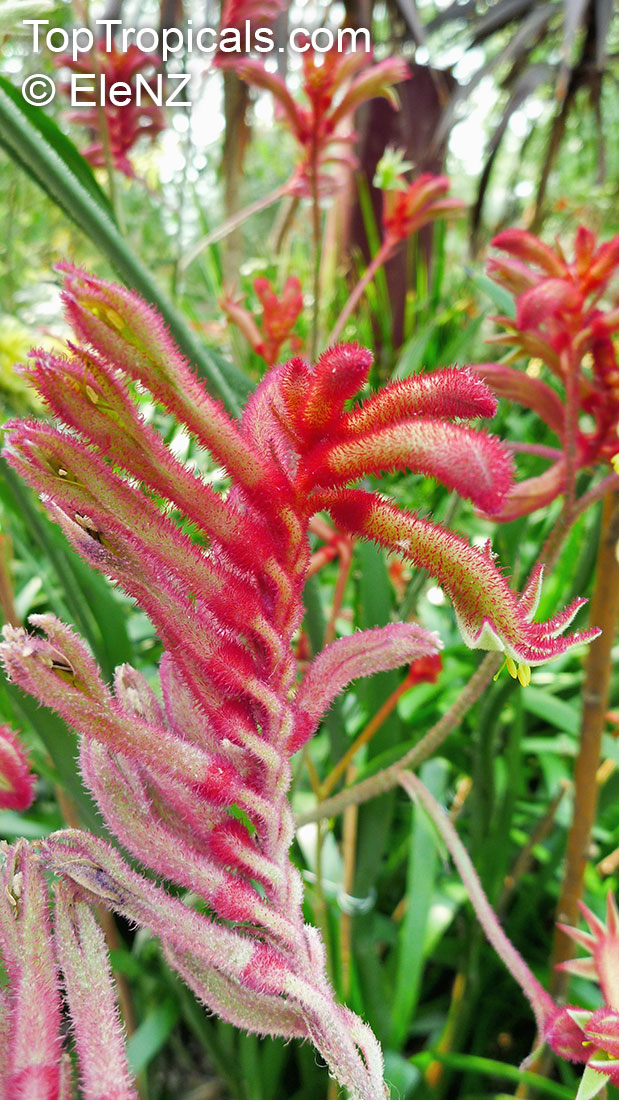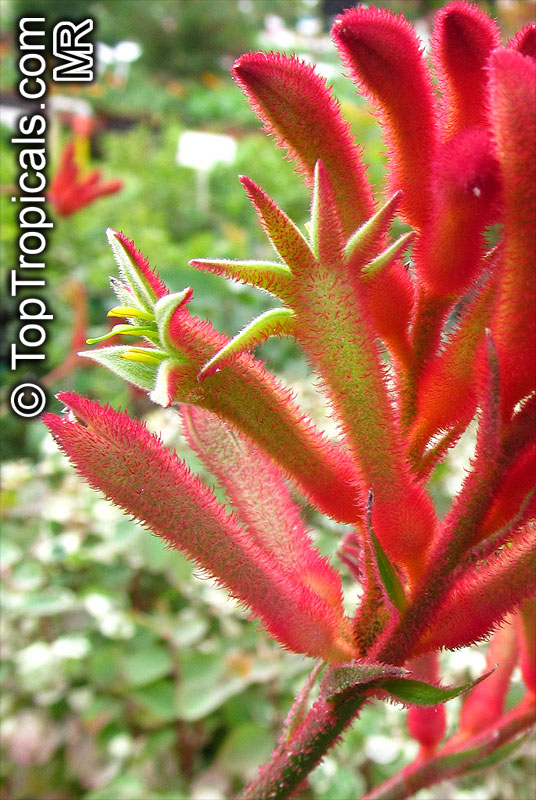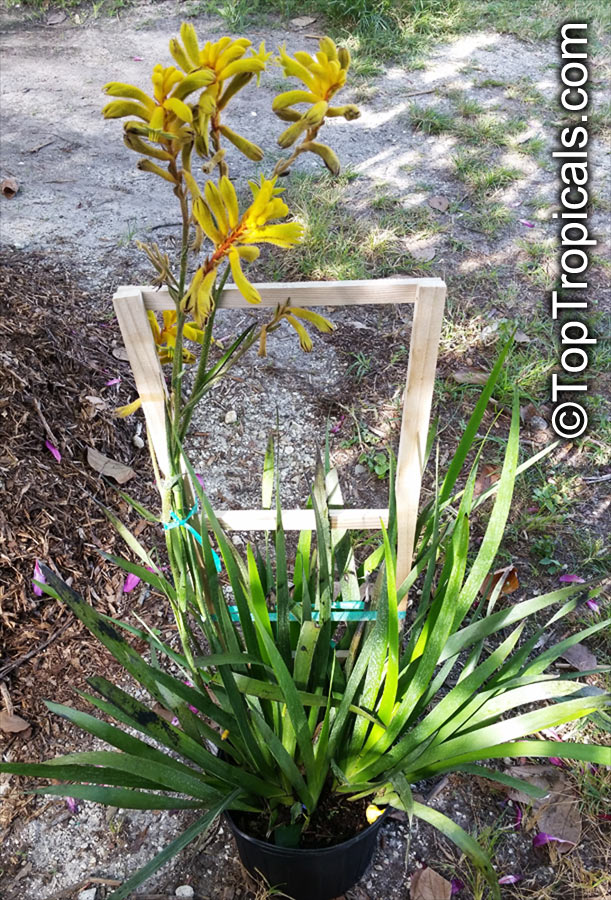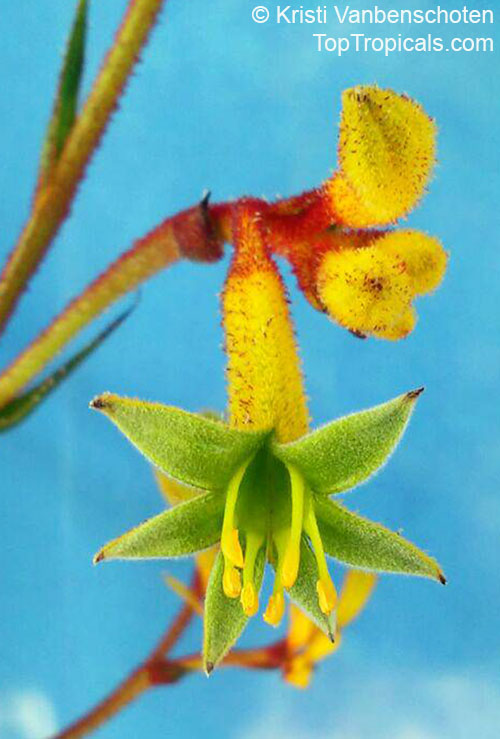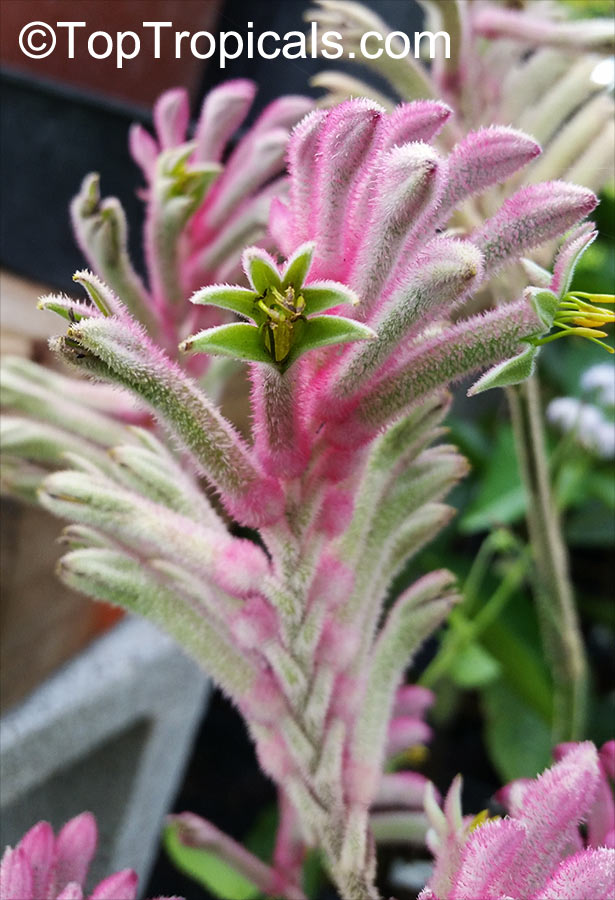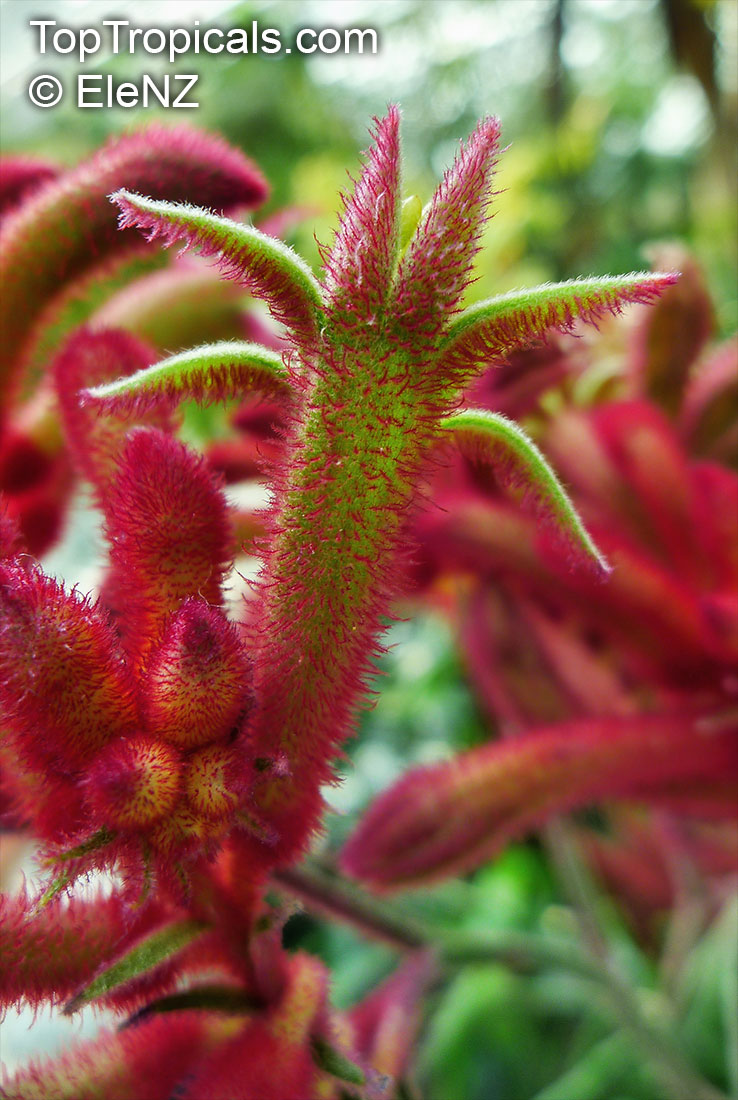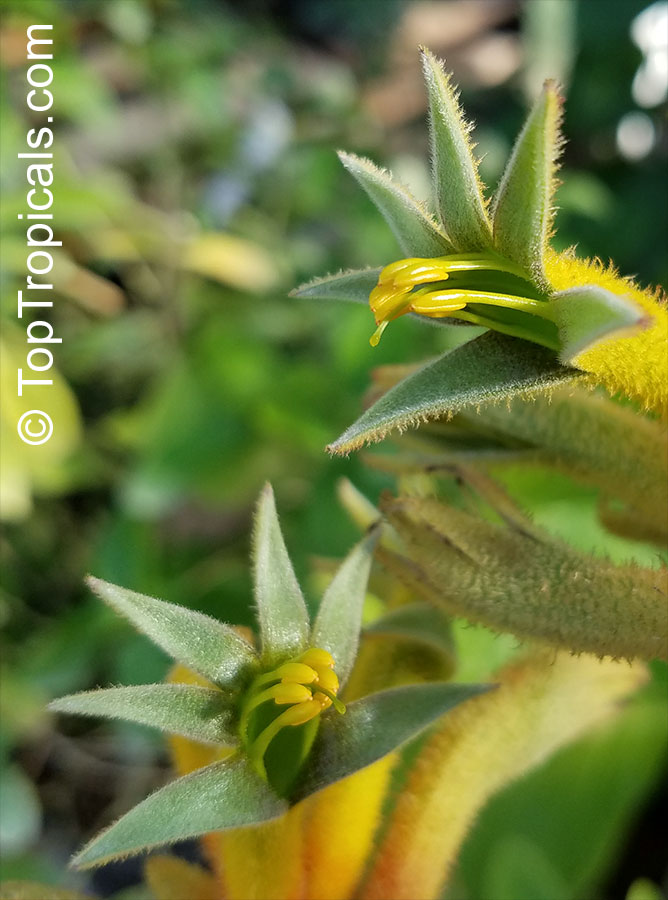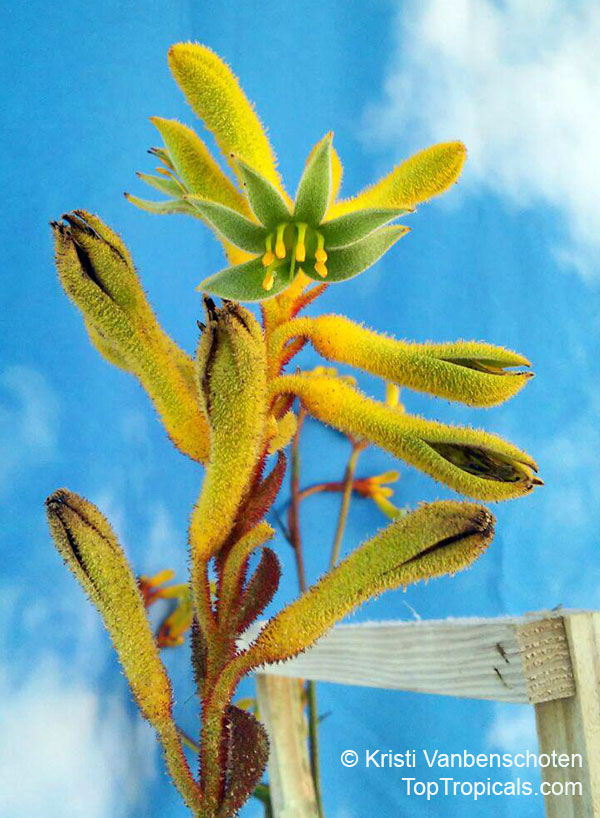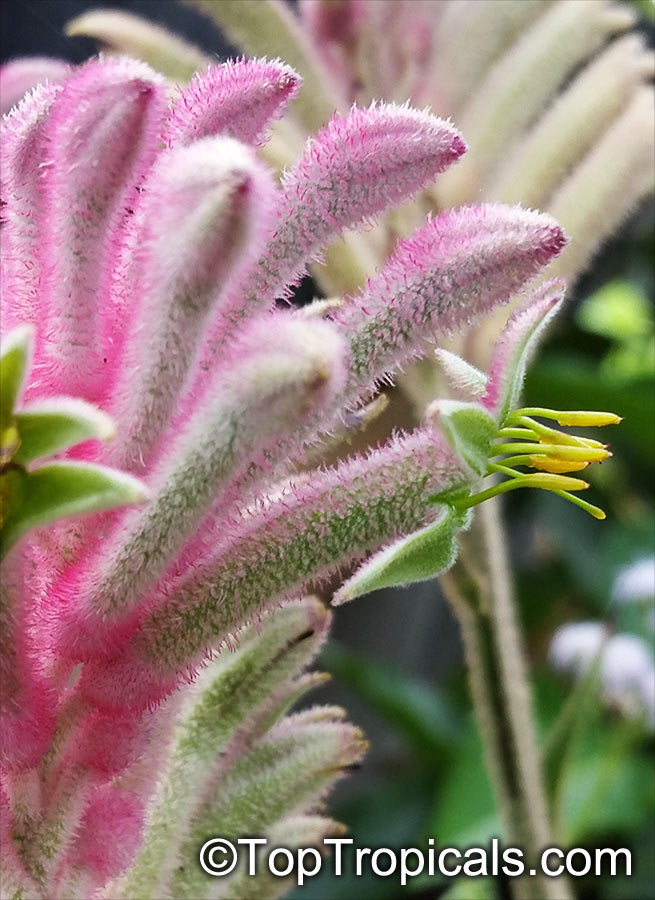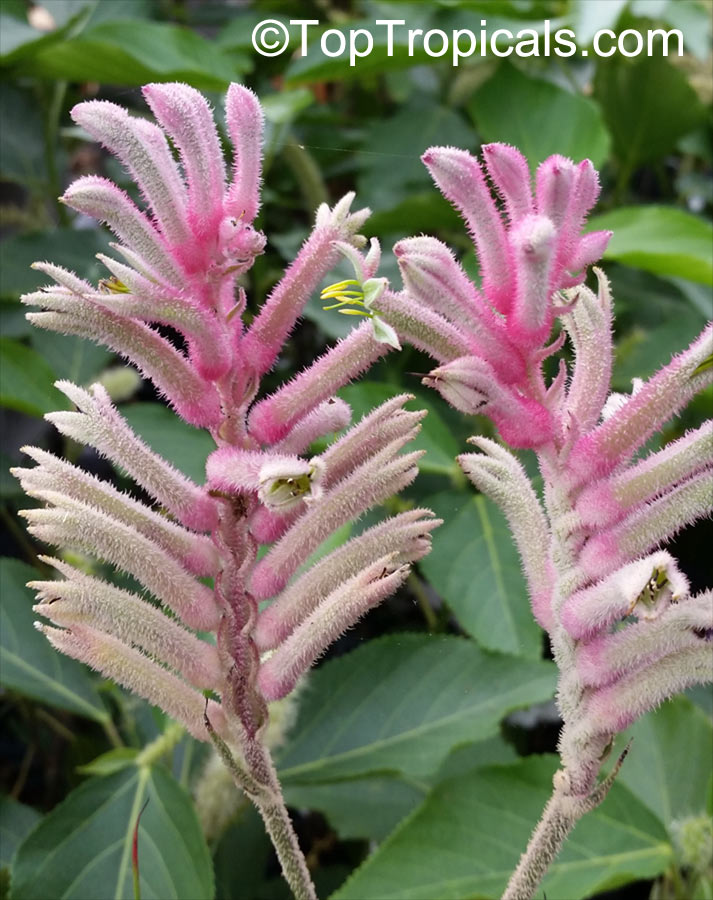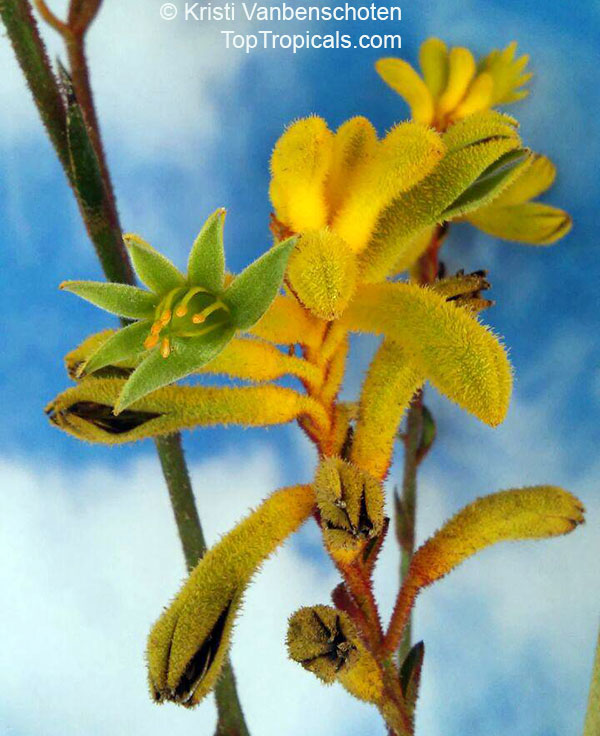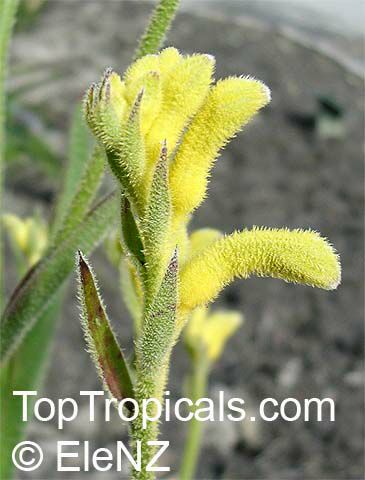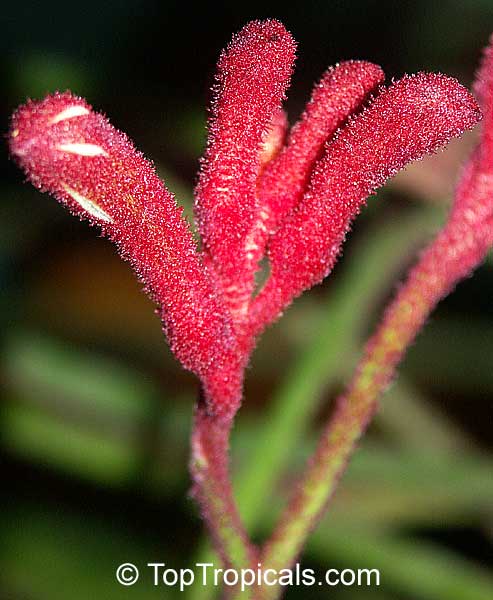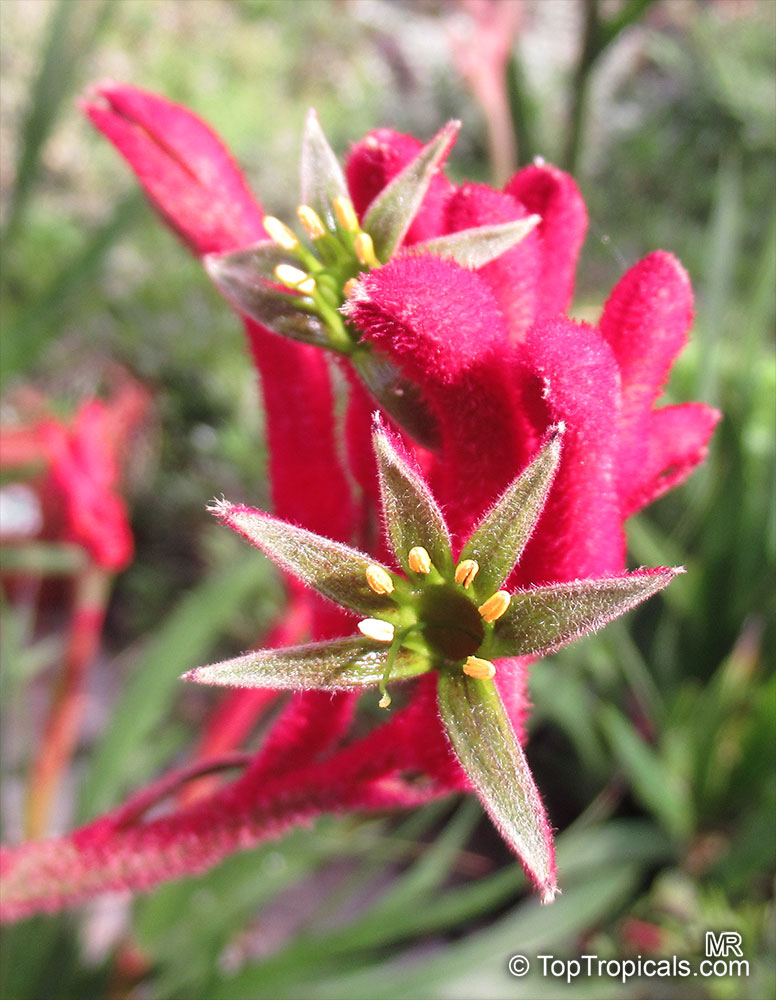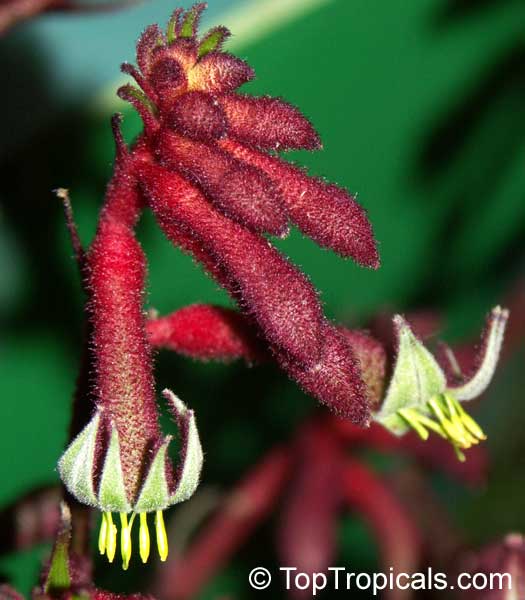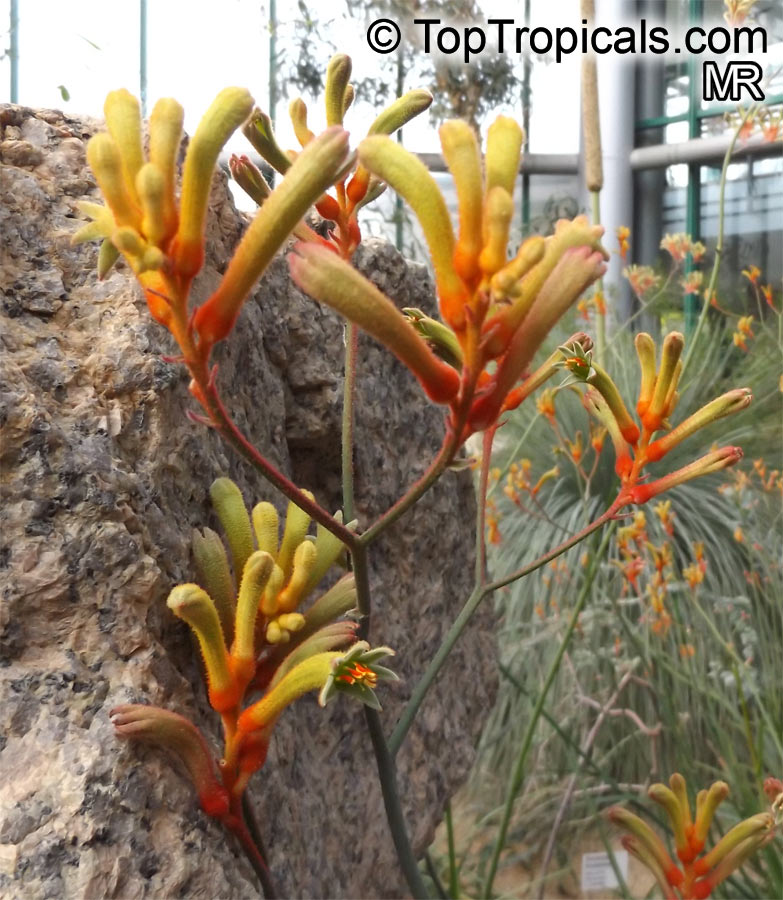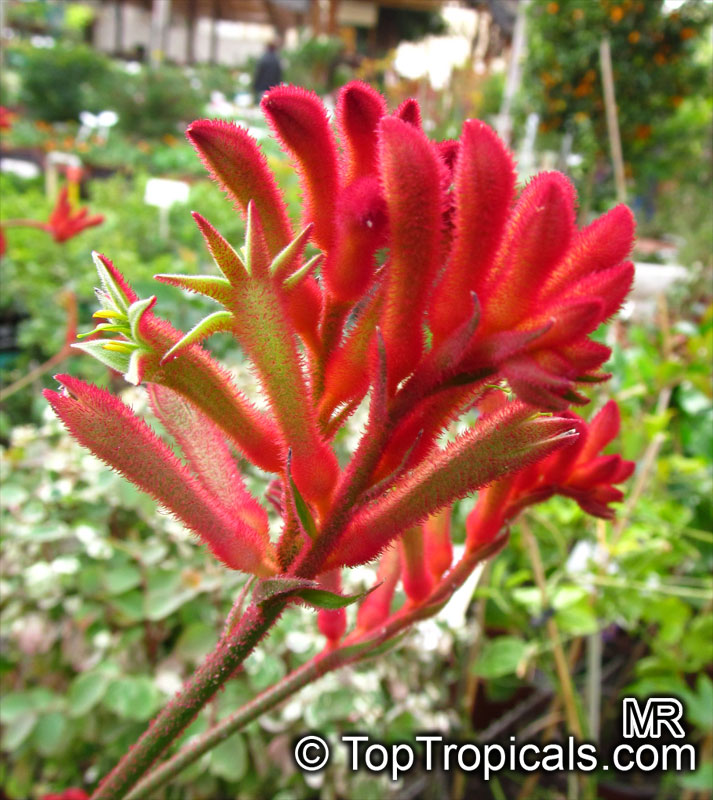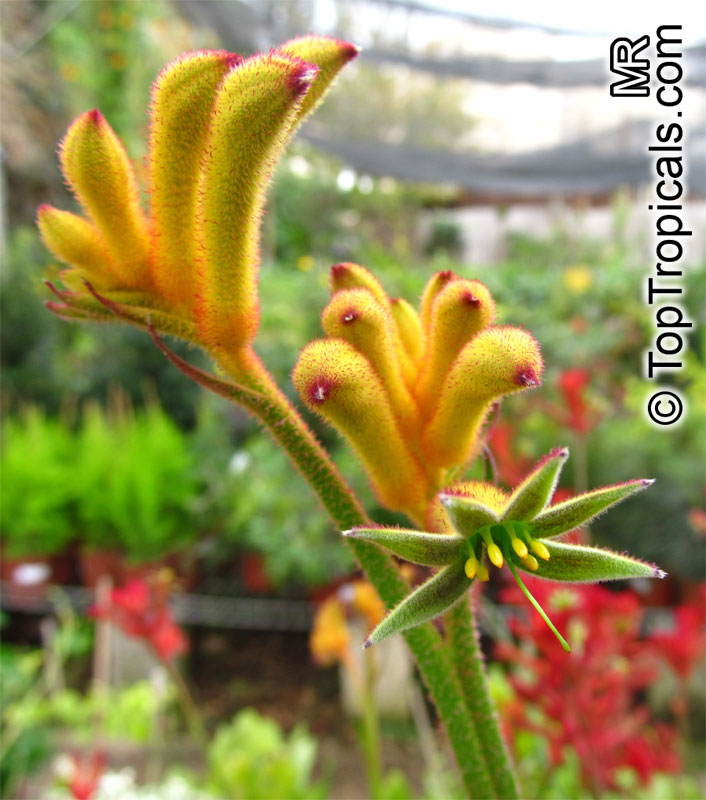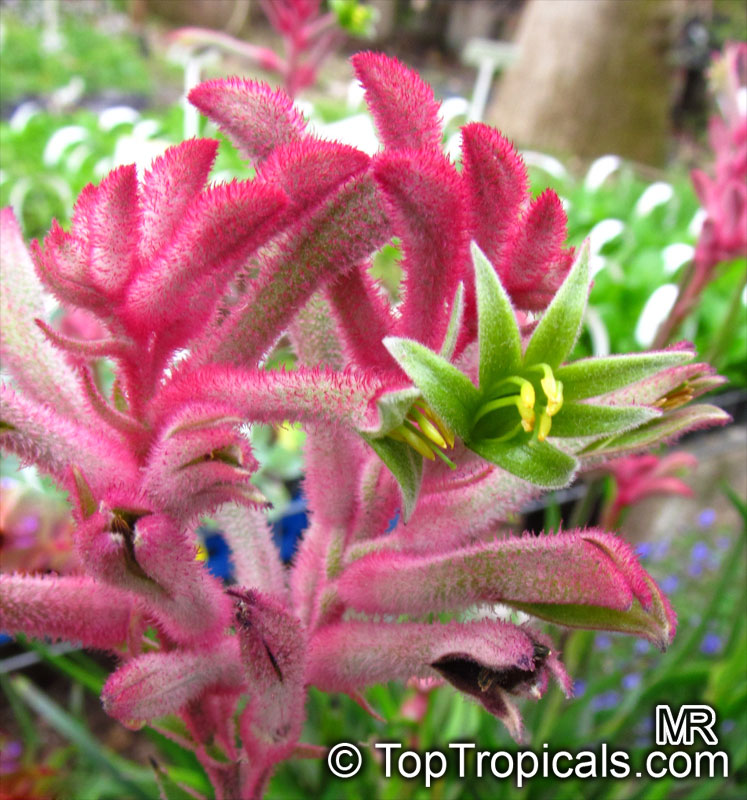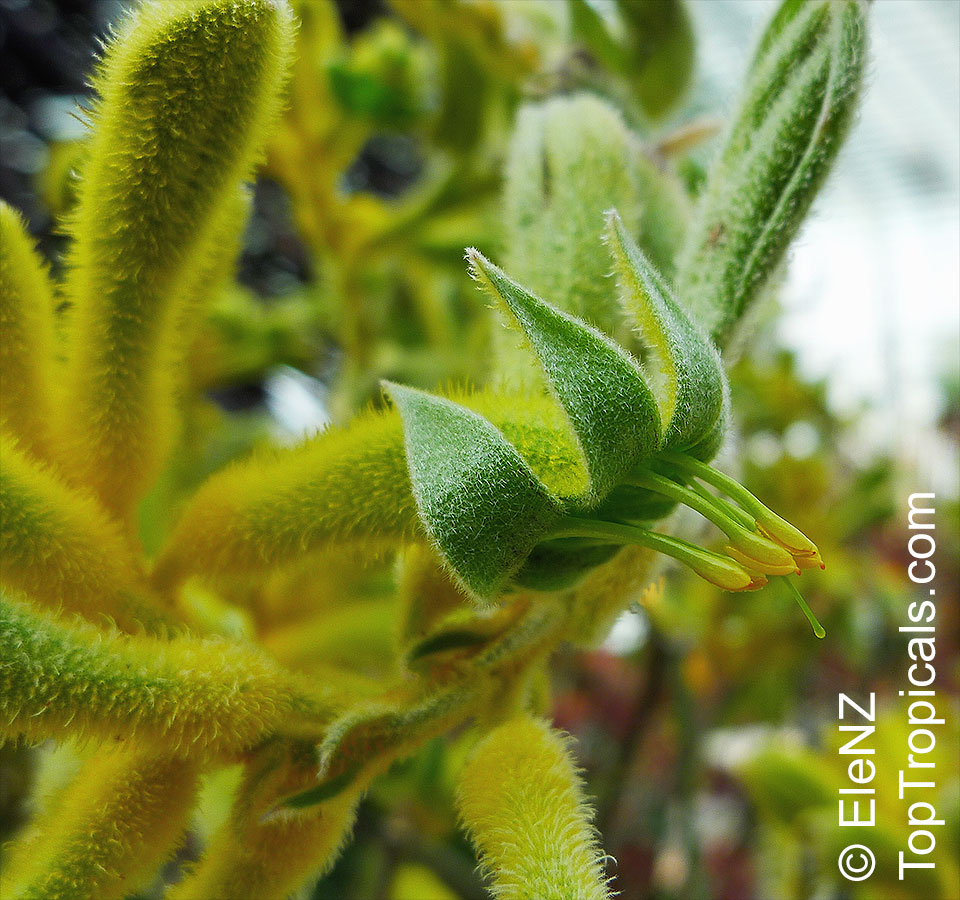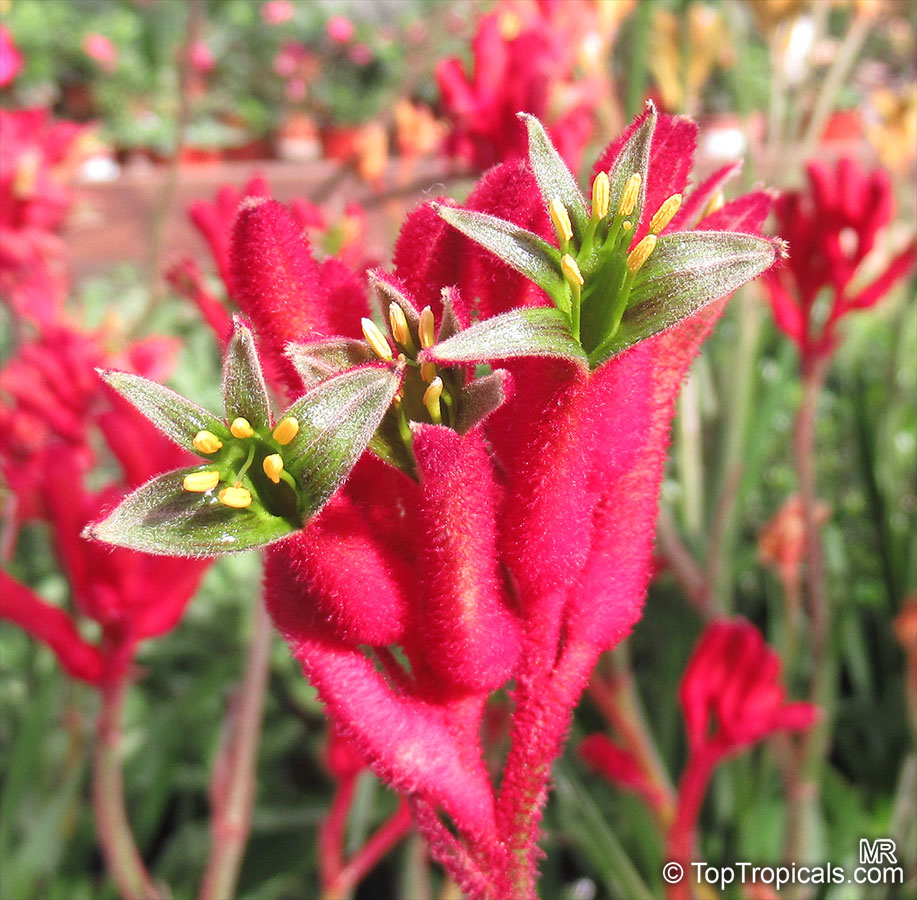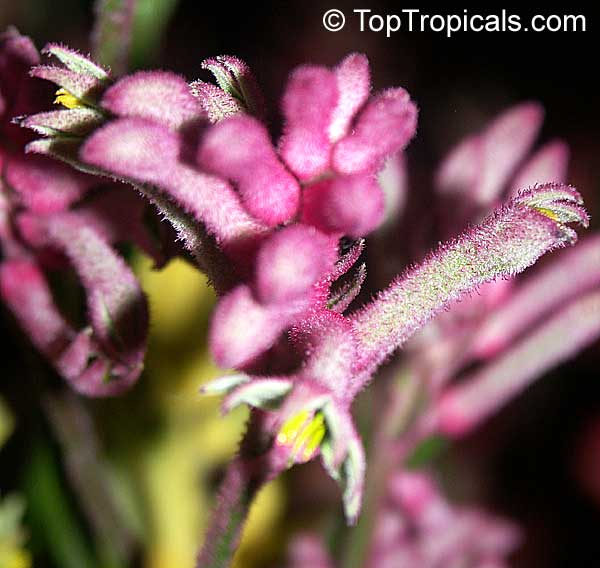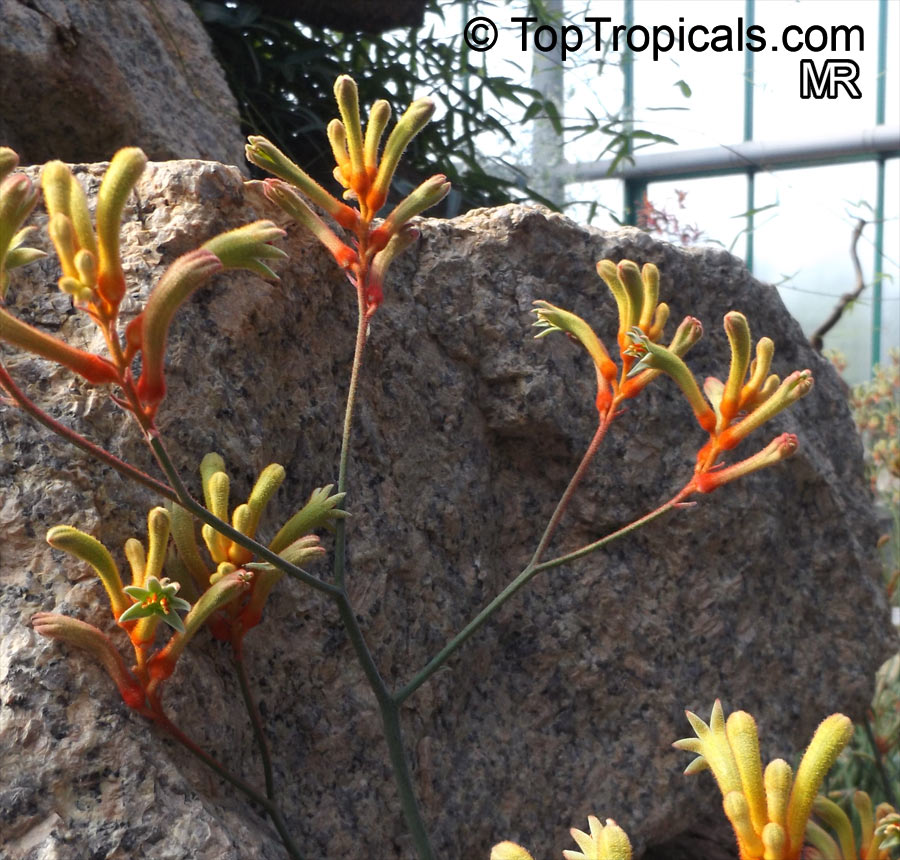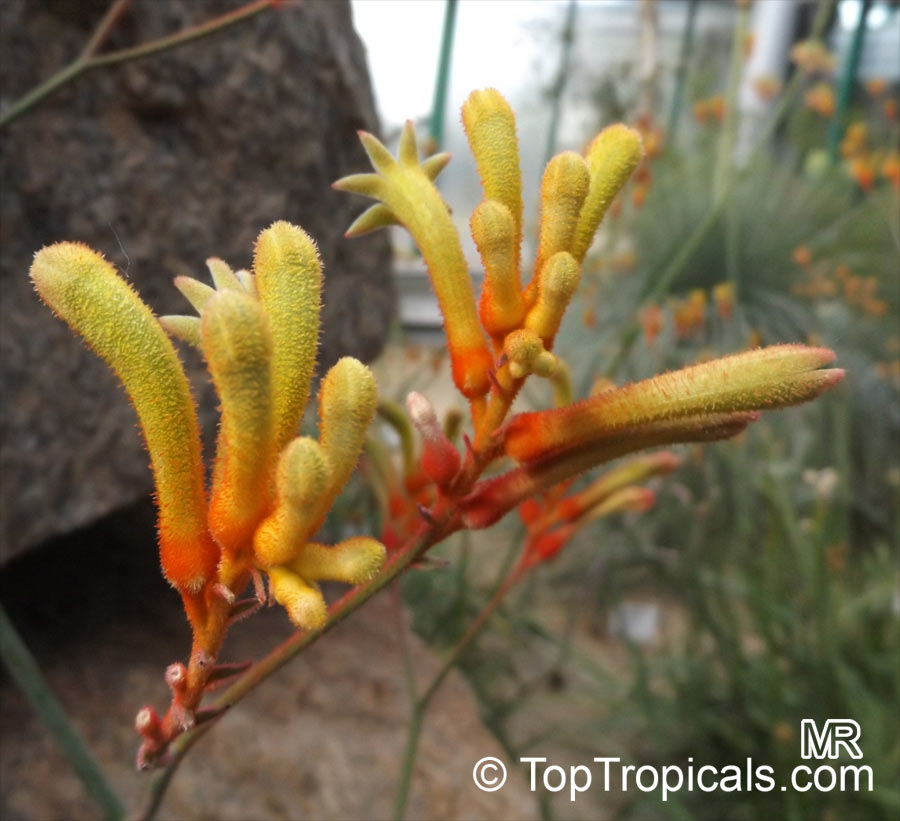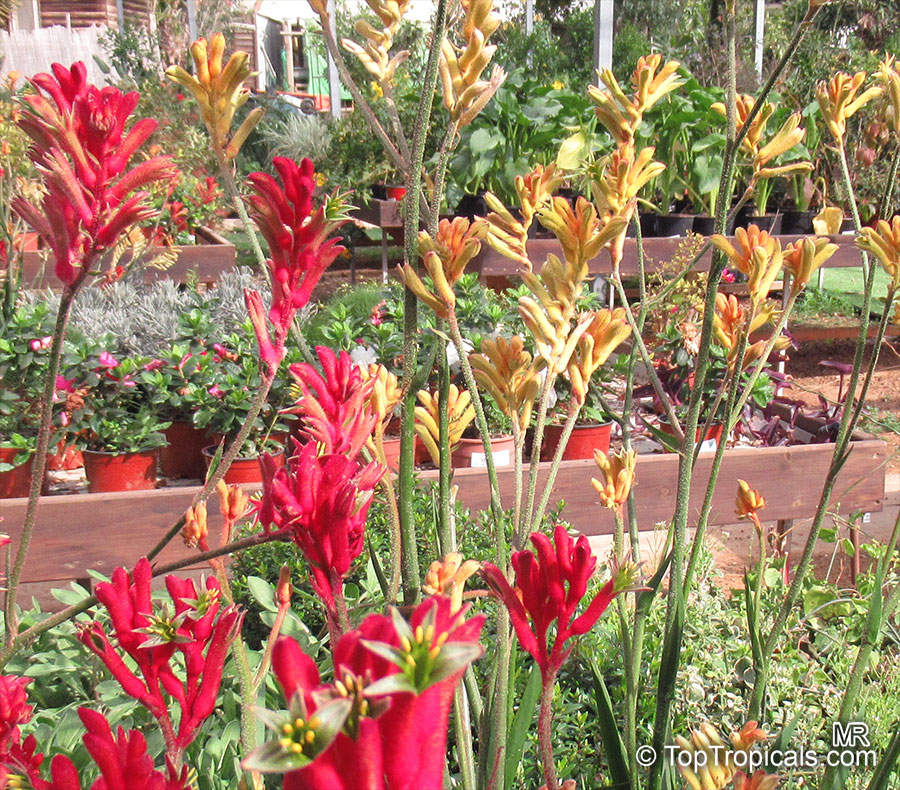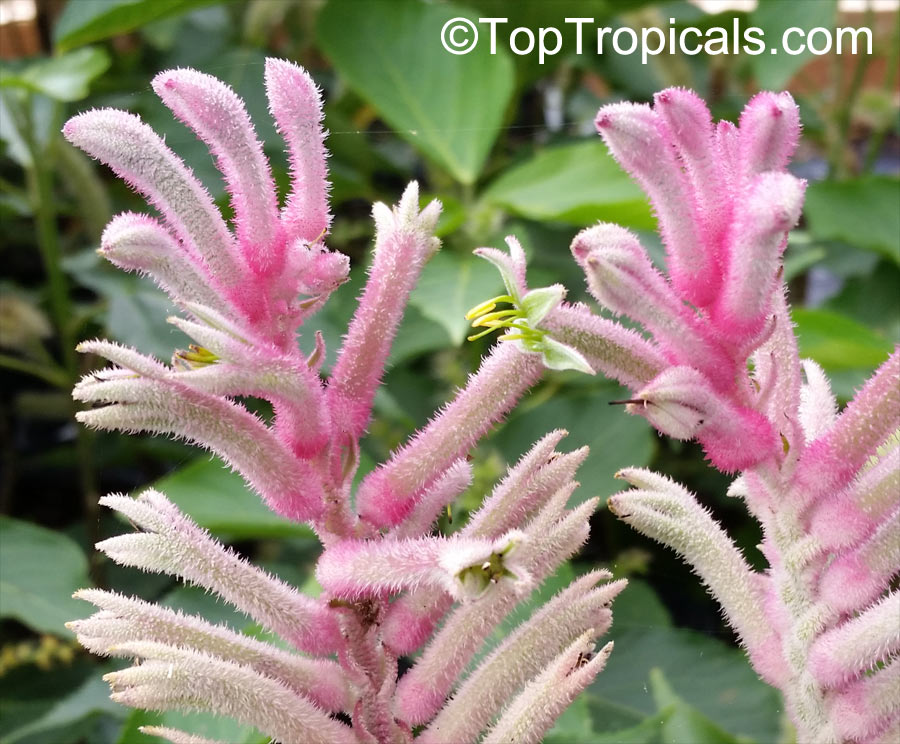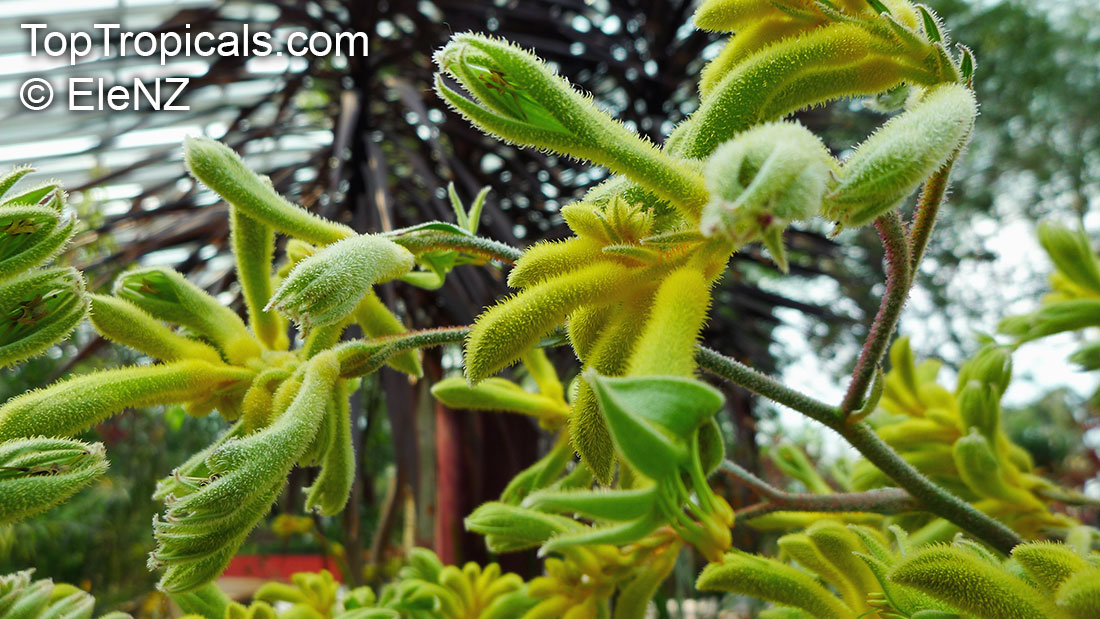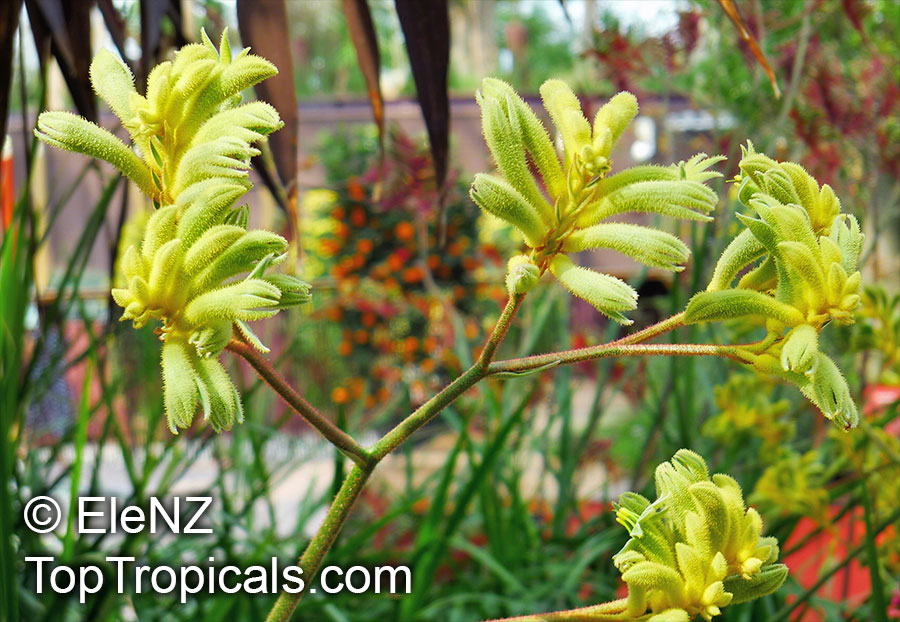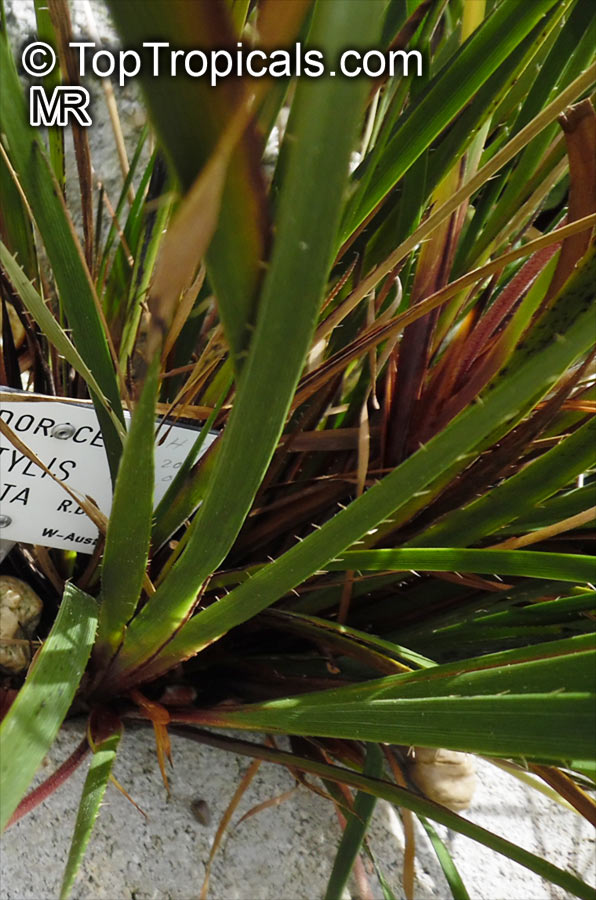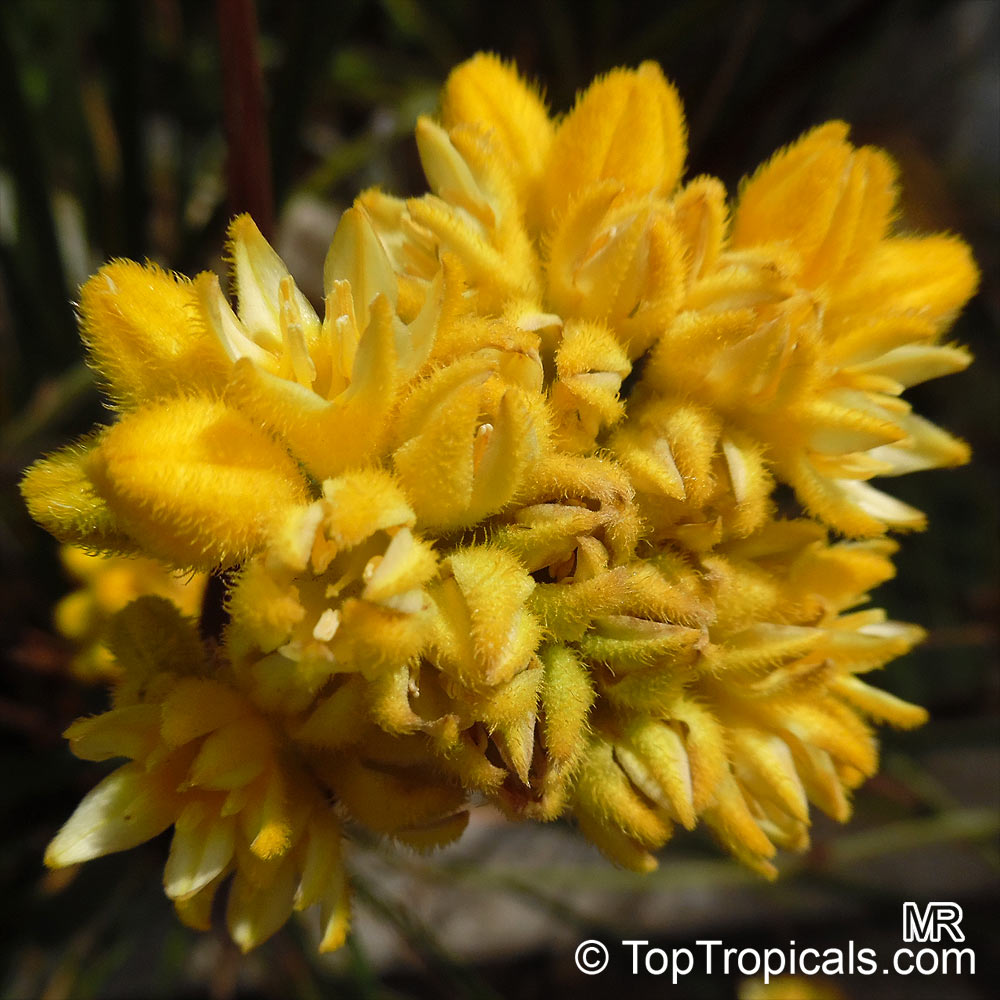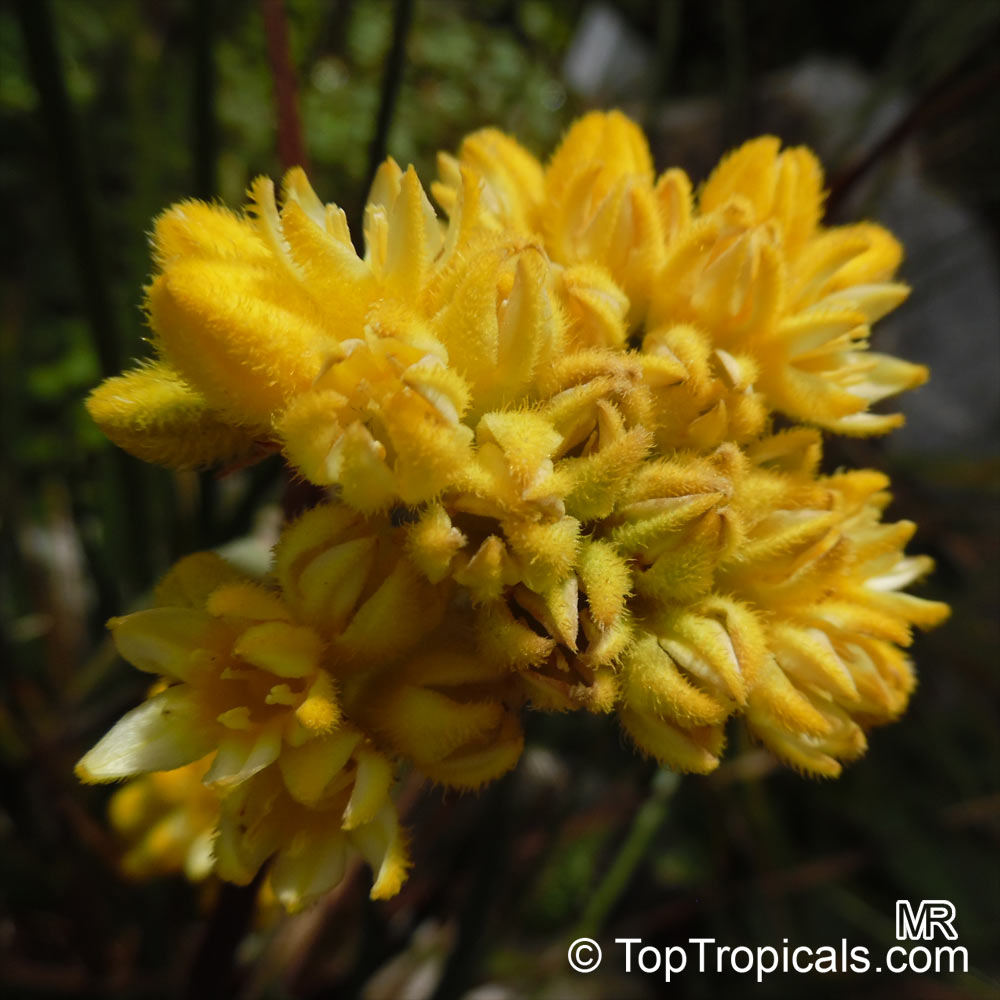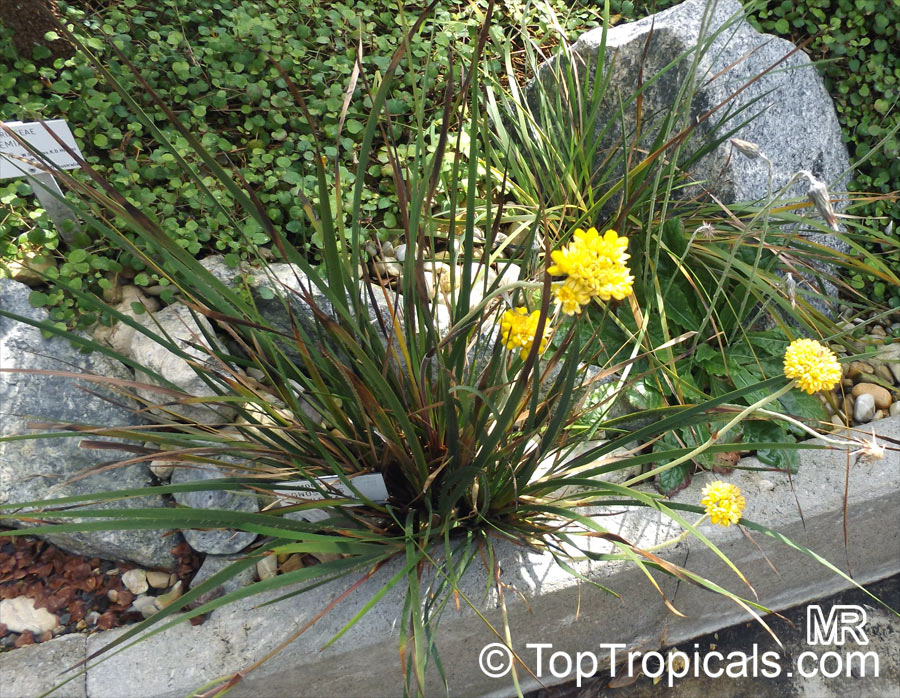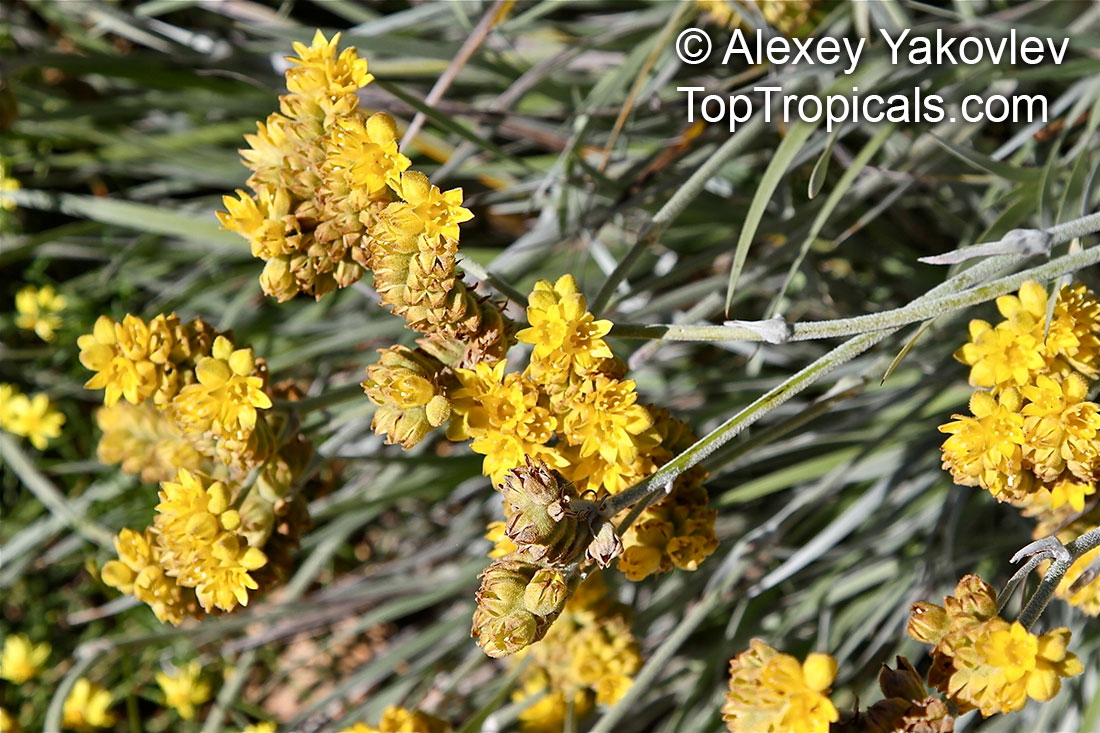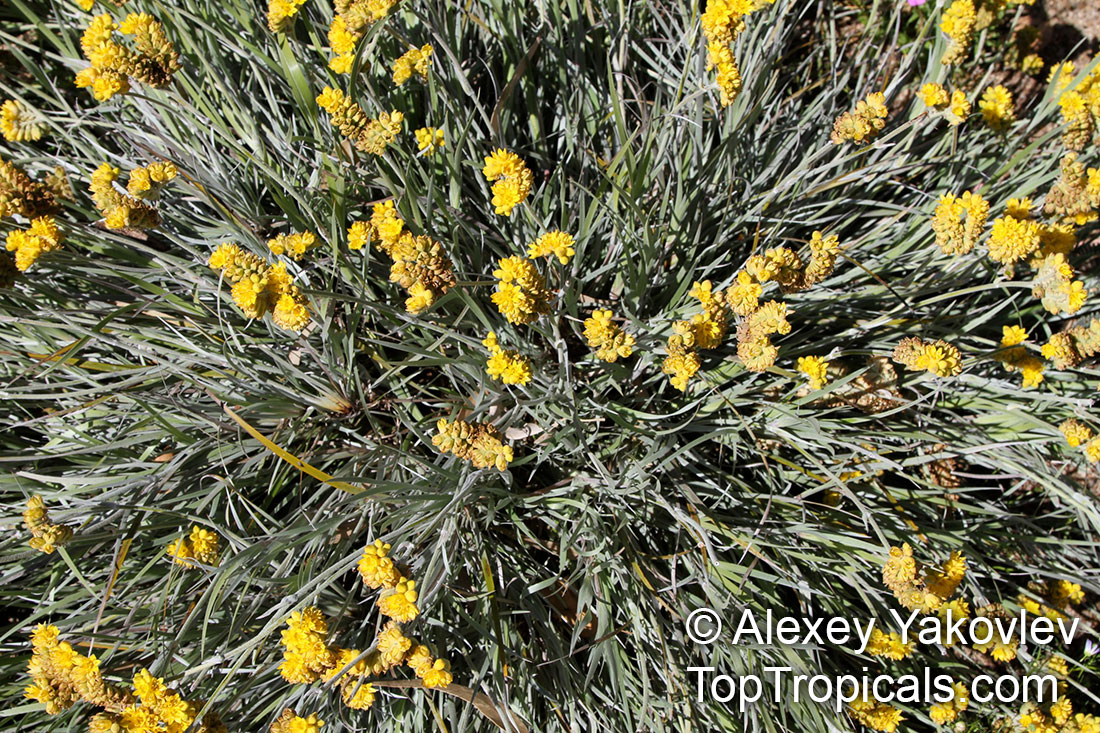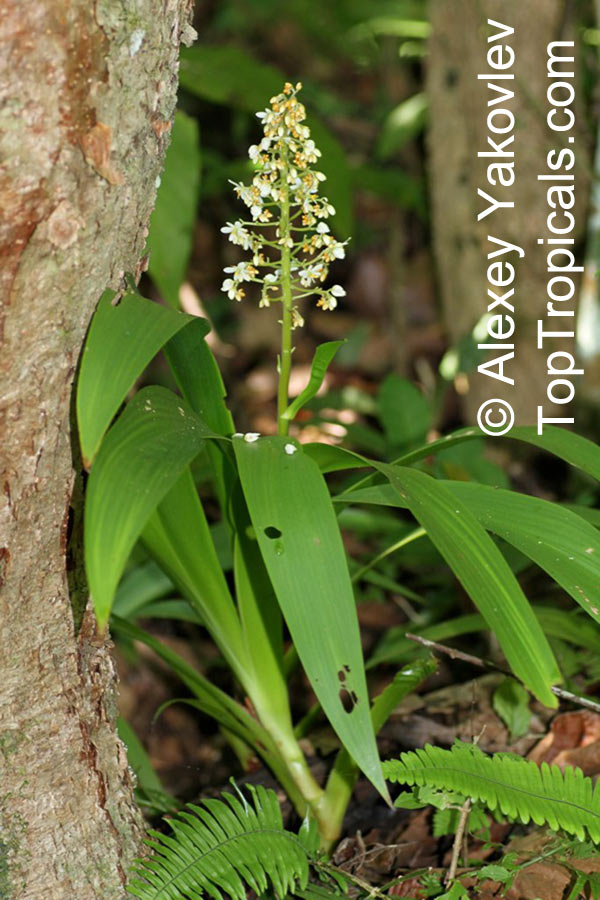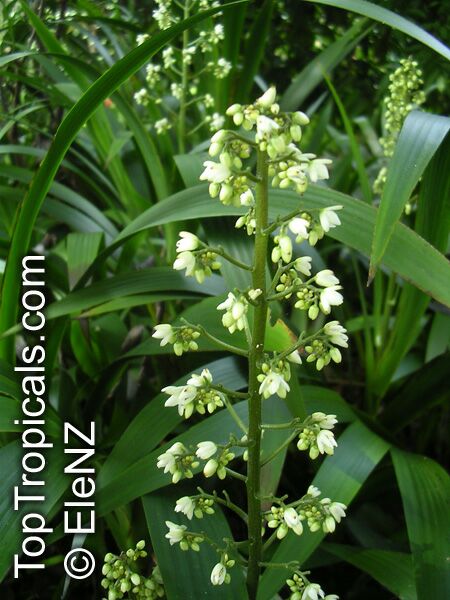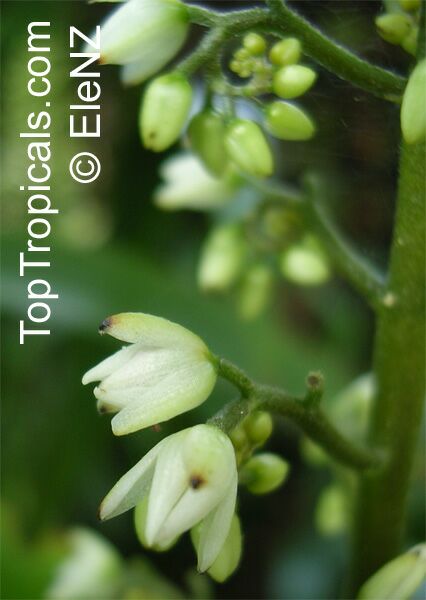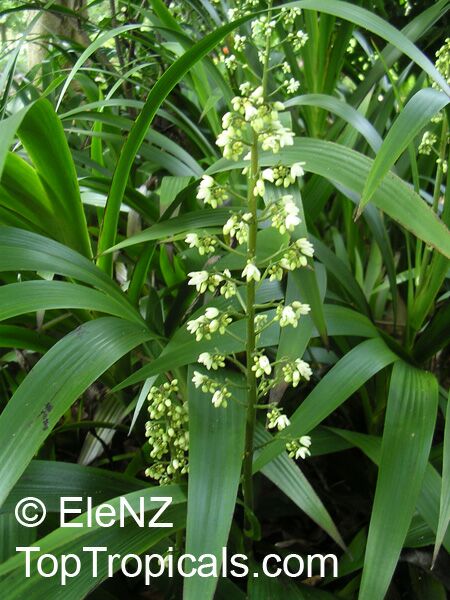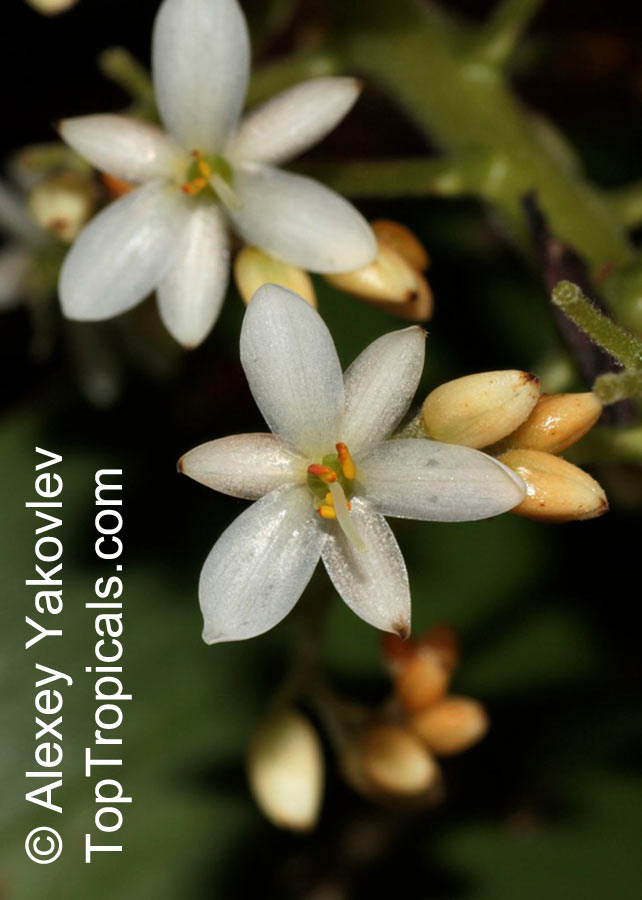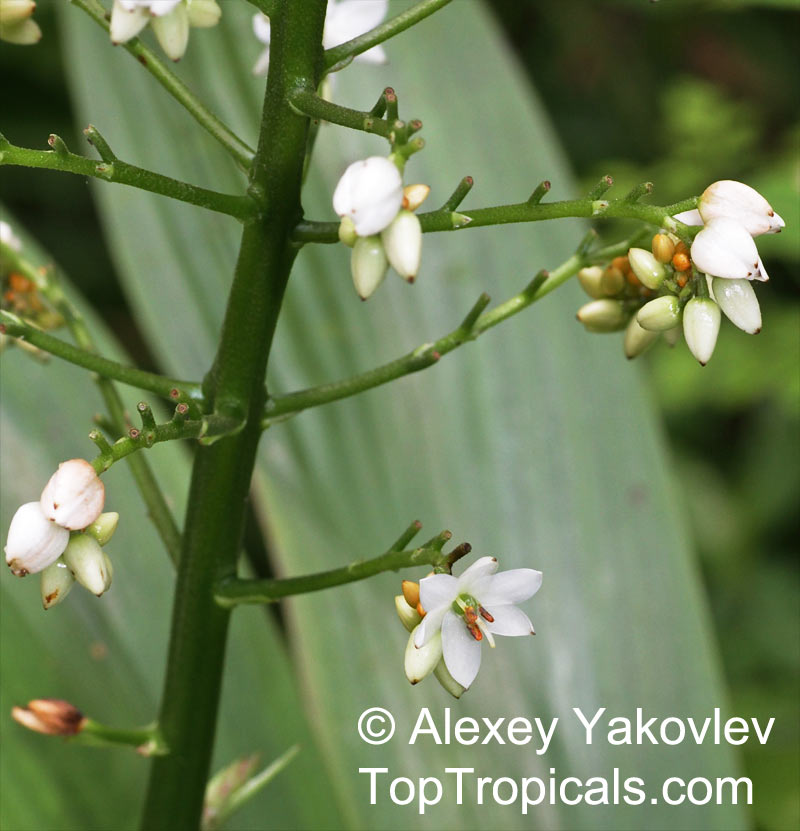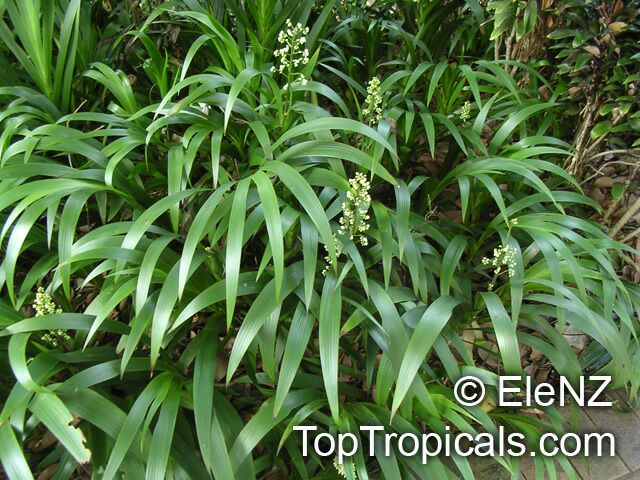Haemodoraceae - Botanical Family
Top Tropicals Plant Encyclopedia
| Number of plants found: 4 |
Botanical name: Anigozanthos sp.
Common name: Kangaroo Paw
Family: Haemodoraceae
Origin: Western Australia








Flower-stalk height and color of kangaroo paws, flowers varies between the species. Many new forms have also arisen as the result of deliberate hybridisation. The shape of the flowers and the position of the pollen-bearing anthers is a feature which allows pollen to be deposited on the head of feeding birds. Different species usually deposit pollen on different areas of the birds' head. This means that pollen from one species is unlikely to be deposited in the flowers of another species. Anigozanthos species are commonly propagated from seed. In general Kangaroo Paw grow best in well-drained soils in a sunny position. Well-composted organic matter will improve growth. Most species are dormant over winter (some die back completely) and it is important not to over-water at this time.
Botanical name: Conostylis aculeata
Common name: Prickly Conostylis
Family: Haemodoraceae
Origin: Australia







The flower heads of Conostylis aculeata are often followed by long, thin seed-pods and during their flowering season from late winter to late spring, the shrub is covered in dainty blooms of sunny yellow and white.
Growing up to 2-5 feet, Prickly Conostylis is a small shrub with attractive foliage and is popular for rockeries or informal hedges, even adding a delightful element to rock walls. Recommended for warm climates, it prefers sun to semi-shade and moderate watering. Additionally, these plants are frost hardy and respond well to an occasional prune, making them great for cold climate regions like USDA Zone 9-11.
Prickly Conostylis is a hardy plant and requires minimal maintenance. It prefers soils which are well-draining and can cope with dry spells if there is adequate sunlight and protection from the wind. Growers should not hesitate to use light mulch to protect its root system and to retain moisture. Watering in during the spring and summer season is recommended during times of drought. The plant also needs to be pruned every few years to keep its neat and tidy.
In regions with cooler climates, the best way to grow Prickly Conostylis is in a pot, as this will provide better protection against cold weather conditions. When planting the shrub in a pot, the grower should make sure to choose one that is evenly sized and with drainage holes at the bottom. Additionally, it should be planted in a spot that gets an adequate amount of sunlight. To get the most out of its flowering potential, the pot should also be watered regularly and soil should be checked periodically to ensure it is not becoming overly dry. In colder areas, where temperatures are more likely to drop well below freezing, the pot should be covered with a layer of mulch in the winter to protect the plant roots and prevent damage. Re-potting every two to three years is also recommended as this will help keep the plant healthy and robust.
Botanical name: Conostylis candicans
Common name: Grey Cottonhead
Family: Haemodoraceae
Origin: Australia






This low-growing woody shrub is native to Australia and only reaches aheight of 2ft.
It easily tolerates full sun and moderate water, providing a unique contrast among flower beds, with its small evergreen mounds and grass-like foliage. It is recommended to be spaced 12-18in apart or planted in wide swaths. Conostylis candicans produces bell-shaped yellow flowers, which bloom in late winter through spring. These small vibrant blooms can attract butteflies and hummingbirds, adding a cheerful touch to any garden.
Despite being native to Australia, the Conostylis candicans can also be grown in USDA Zones 9-11. In cold climates and cold weathers, it is recommended to grow them in pots and move them indoor during severe weather. Plant in well-draining soil to ensure the longevity of the plants. Consistent watering is necessary during summer months, but make sure to avoid overwatering. Variety of rich soil mixes are available for purchase that are designed specifically for cacti, succulents and tropical plants, making sure the soil drains well. Though Conostylis candicans is easy to grow, it should still be planted in a sunny part of the garden where enough air and breeze is available.
Overall, Conostylis candicans is a low-maintenance and attractive groundcover, with its small evergreen mounds and bright yellow and orange flowers. Its low-growing habit makes it perfect for edging, spilling over rock walls, or cascading down slopes. When planted in full sun and well-draining soil, this small shrub (2-5ft) can bring an abundance of pop to any garden.
Botanical name: Xiphidium caeruleum
Common names: Palmita, Soskia, Cola de Paloma
Family: Haemodoraceae
Origin: Southern Mexico to South America







Use link to repeat this search:
https://toptropicals.com/cgi-bin/garden_catalog/cat.cgi?search_op=and&keyword_op=and&language=e&family=Haemodoraceae
&number=10&no_change_lang=1&user=tt&sale=1&first=0

